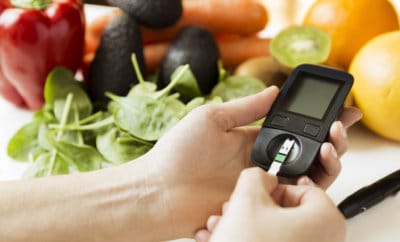Food
More South Asians in Developed Nations Prone to Type 2 Diabetes: Study

Representational Image
Photo: Bigstock
Type 2 diabetes can occur at an early age and at a lower body mass index in South Asians.
The rising instance of Type 2 Diabetes in the South Asian population in developed countries like the United States is because of their food habits, according to researchers at the University of Texas Southwestern Medical Center.
South Asians are four times more prone to get Type 2 diabetes than Caucasians in the United States, among whom the rate of incidence is 8.1 per cent for men and 6.8 per cent for women, the research said, talking about the four million people from India, Pakistan, Bangladesh, Nepal, and Sri Lanka who live in the country.
Type 2 diabetes can occur at an early age and at a lower body mass index in South Asians.
According to the study, South Asians with Type 2 diabetes consumed fewer calories but their intake of beneficial nutrients was also less than that in healthy South Asians.
“This is the first study that thoroughly compared both the macronutrient and micronutrient intakes in South Asians with and without Type 2 diabetes using an objective measure – a three-day dietary assessment method that included images of all foods consumed,” said Dr. Abhimanyu Garg, chief of Internal Medicine’s Division of Nutrition and Metabolic Diseases, and senior author of the study.
“These results clearly indicate that diabetic South Asians may need to improve their dietary habits to achieve nutrient intakes recommended by the Institute of Medicine,” he said.
“We recommend that South Asians with Type 2 diabetes include in their diets more yellow and orange fruit and vegetables, dark green leafy vegetables, whole grains, legumes, nuts, seeds, vegetable oils, fatty fish, and low-fat milk and dairy products. These recommendations may also be helpful to improve their blood cholesterol and blood pressure levels.”
The research by the Center for Human Nutrition team involved a survey of 77 South Asian-Americans — 44 with diabetes and 33 without. It found that those with Type 2 diabetes consumed less dietary fiber, linoleic acid, vitamin A, vitamin E, calcium, magnesium, zinc, potassium, and ß-carotene.
“Our findings may be less applicable to South Asians living in their native countries because of the effect of acculturation on dietary intake in South Asian migrants in the U.S. and because of the economic disparity and its effect on food choices between the two populations,” Dr. Meena Shah, assistant professor of internal medicine and the lead author of the study, said.
The study may be applicable to South Asians living in the United Kingdom, Europe, and Singapore too, according to the researchers.



